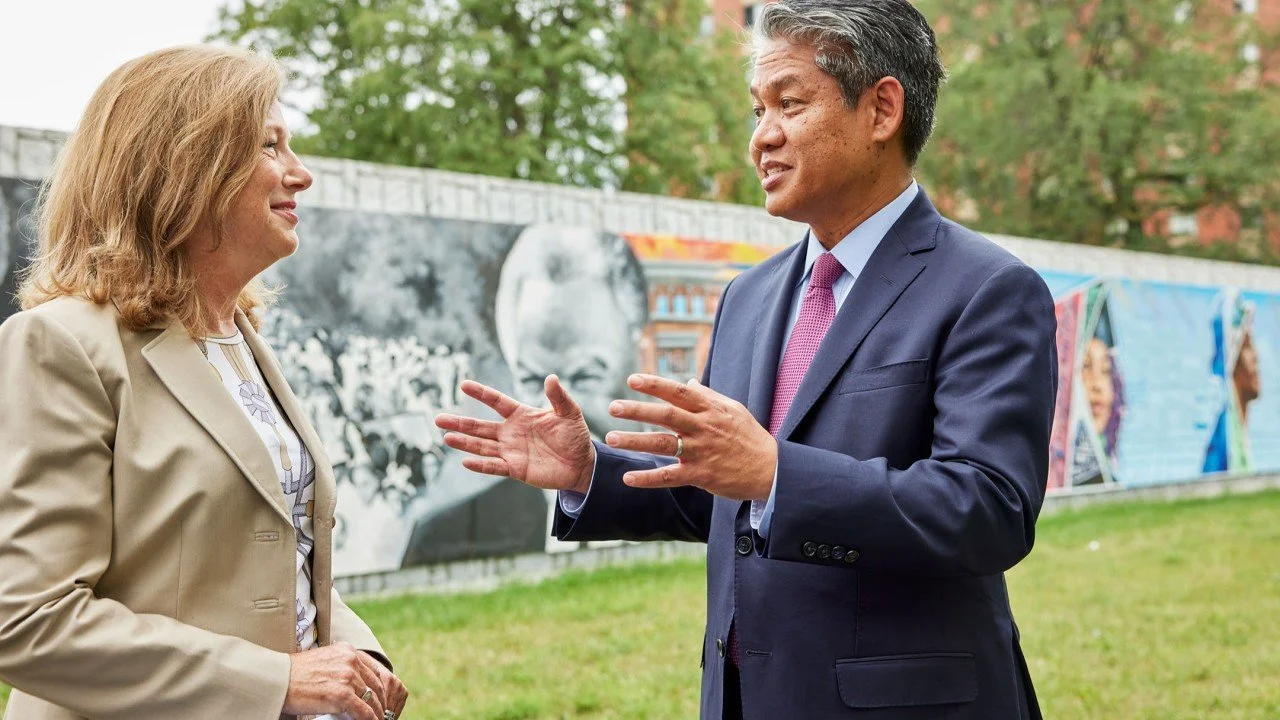Reviving Bronzeville: Energy, Art, and Community Transformation
Source: SEIMENS | · LINKEDIN · | September 12, 2024
How a historic Chicago neighborhood is leading the way in solving the global energy trilemma.
When Andre and Frances Guichard first opened their namesake Gallery Guichard in Chicago’s Bronzeville neighborhood 19 years ago, they were trailblazers. Sure, the South Side Community Art Center had been around since 1940, but no other gallery in the area had focused on the African diaspora. Nearly a decade later, when they put together a consortium to purchase a building and create the Bronzeville Artists Lofts joint venture, then took over the 7,000-square-foot ground floor, they revolutionized again, making the first artists’ live-work residence in Chicago.
“We selected Bronzeville because of its history,” says Frances Guichard, who, along with her husband, is also a visual artist. African Americans had come to Chicago in the early 1900s during the Great Migration trying to escape the Jim Crow South, and this “Black Metropolis” eventually became home to many cultural icons and music legends. “Dizzie Gillespie, the Ink Spots, and Josephine Baker used to hang out next door at the Palm Tavern after performing downtown, where they couldn’t live or stay because they were Black,” Frances adds. Now the former Jones Brothers Ben Franklin five-and-dime store that Gallery Guichard occupies showcases contemporary canvases and sculptures by Black artists, including Abiola Akintola, Stephen “Sayo” Olalekan, Pearlie Taylor, and Marlene Campbell, whose works are snapped up by world-renowned collectors. The couple hosts monthly gallery crawls which started with 50 patrons on trolleys nearly 20 years ago and now welcome 5,000 guests on double-decker buses every third Friday of the month. “The community has grown to include multiracial grandparents, parents, and kids in the same space,” says Andre. “You can experience multimedia collaborations with DJ Marcell and hear live music down the street during our ‘Artini’ happy hours in our Palm Garden next door. It’s very festive.”
Despite the lively streetscape visitors see today, Bronzeville wasn’t always a haven of arts and new initiatives. After the economic collapse of the 1960s and 1970s due to corporate disinvestment, affluent African Americans fled. By 2000, Bronzeville had lost approximately two-thirds of its population and almost all of its commerce. Developers then began investing in the nearly 2,000 vacant lots, constructing multi- and single-family homes. The redevelopment has attracted new residents and revitalized parts of the community. However, the rebirth of Bronzeville has taxed the existing power grid and created increased demand for reliable energy.

